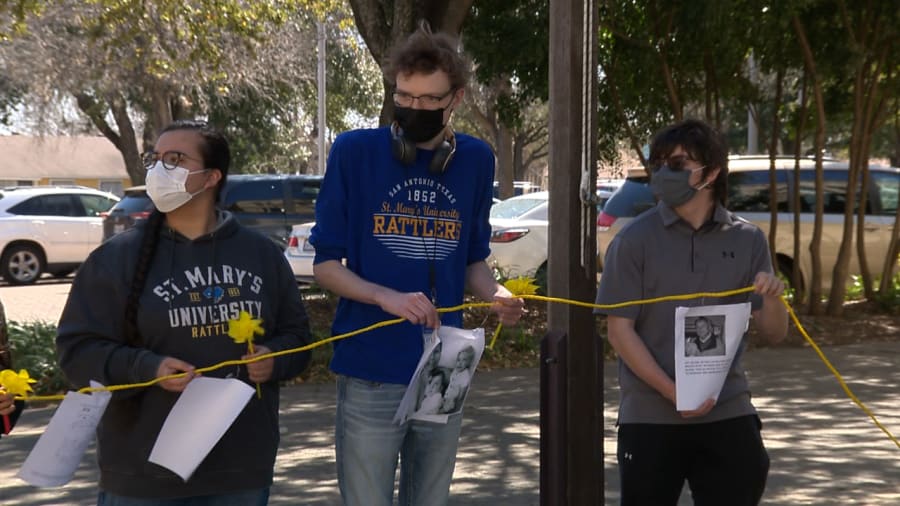SAN ANTONIO – Even the rehearsal was emotionally powerful for the National Day of Remembrance event at 11 a.m. Saturday at the main entrance to St. Mary’s University.
Fifty students briefly shared the stories of photos they’re holding of German-American children who were confined along with their parents in internment camps during World War II.
“Each of my students will pay tribute to one child, and remember that child,” said Teresa Van Hoy, professor of history.
“They are old and they’re dying. We need to bring them peace.”
Van Hoy said up to now, the children are among the German-American internees who’ve been forgotten for decades.

To mark Saturday’s National Day of Remembrance, her students launched the “Remembering Our Children” campaign in hopes it will lead to federal legislation recognizing what happened to them and their families.
“They have not been commemorated by our U.S. government, so it seems kind of an exclusion to the German Americans,” said Erica Esparza, a graduate student in public history.
President Reagan signed legislation in 1988 honoring Japanese Americans internees, and President Clinton did the same in 2000 for Italian-Americans.
Helping to lead the student campaign, Esparza is also a mother of three.
She said the mothers of those children have long since passed, so they can’t petition that their children be recognized like the students are doing now.
“So I feel compelled to kind of speak on their behalf,” Esparza said.
As an example, Van Hoy pointed out the three-day observance by the Museum of American History in Washington, D.C. will be solely about Japanese-American internees.
Saturday’s remembrance at St. Mary’s University will have several German-American internees sharing their stories via Zoom on a big screen set up for the outdoor event.
Among them will be Werner Ulrich of New York who was sent as a three-year-old child along with his family to the internment camp in Crystal City, southwest of San Antonio.
“I remember standing at the fence looking across the field and it was wild brush. That’s all I saw. And that was at the end of the world,” Ulrich said.
He said the experience was tough on his parents who had been living in the German section of Manhattan known as Yorkville.
“My father was an angry man in the first couple of years,” Ulrich said. “The FBI raided many apartments and rounded up many men.”
Although the Nazis surrendered in 1945, Van Hoy said the Crystal City camp where German, Italian and Japanese-Ameridan families were held, did not close until 1948.
National Day of Remembrance flyer by David Ibanez on Scribd
